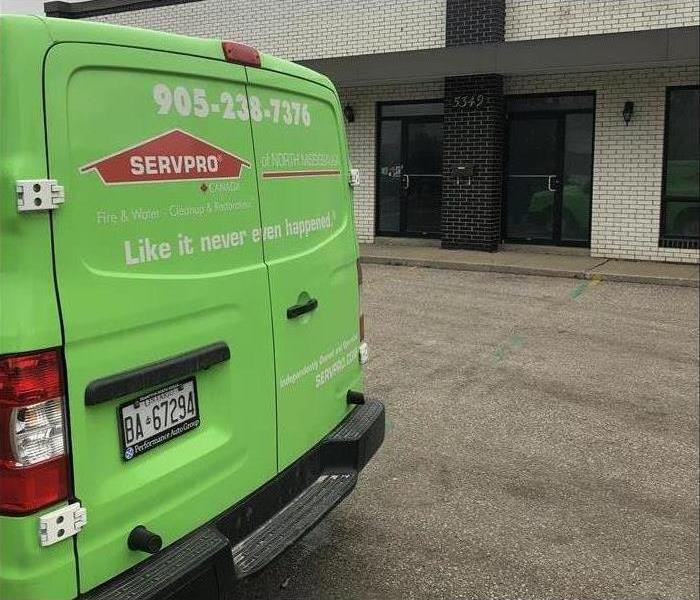Moisture Removal and Drying in Mississauga Properties Are Critical during Storm Damage Mitigation
5/13/2022 (Permalink)
 Customers in Mississauga Breathe a Sigh of Relief When SERVPRO Swiftly Arrives for Storm Damage Mitigation
Customers in Mississauga Breathe a Sigh of Relief When SERVPRO Swiftly Arrives for Storm Damage Mitigation
Following Migration Patterns After Flood Damage in Mississauga
Homeowners experiencing flooding for the first time in Mississauga might express some surprise at the lengths we take to ensure we find all spaces the water invaded in your structure. Our technicians know that relying on a visual scan of previously flooded rooms and levels of your home is insufficient to assure that all water is evacuated and that no moisture remains. We use thermal imaging and moisture detecting devices to map the full contours of the flood water’s invasion.
Flooding Respects No Timeline or Barrier
Flood damage in Mississauga is common during snowmelt or heavy precipitation, but it is impossible to predict when these events will occur as weather patterns evolve. The Credit River and other streams and creeks in our neighborhoods also flood during the winter when ice dams form, sending freezing water across the landscape and through cinder blocks or concrete foundations into your basement.
Risks of Missing Hidden Water During Flood Mitigation and Remediation
Most foundations contain building materials with some degree of permeance, allowing water and vapor to intrude depending on the water pressure and the time the flooding surrounds the materials. Vulnerable areas like windows, vents, and walk-out doorways permit even more water to pass inside. Interior building materials can trap and obscure floodwaters. The fluids collect in the cells of cement blocks and rise between exterior walls and drywall, paneling, or lath and plaster. Water leaking into a basement can pool the above ceilings and percolate into hidden recesses behind appliances, heating and cooling systems, and storage areas. If SERVPRO technicians fail to follow the water migration paths both into the home and after it intrudes, moisture remains, causing progressive deterioration of building materials and creating conditions for secondary damage like mold growth.
Detective Work Reaps Benefits
As our submersible pumps and truck-mounted extractors move the bulk of the water out of your home, SERVPRO employees are looking for hidden water caches and saturated structural components. We use the following devices to track the water to devise strategies for removal and appropriate structural drying.
Thermal Imaging
We use special cameras that show temperature variations, assisting our trained and experienced crew members in isolating trapped pools of liquid water or heavily saturated materials.
Moisture Sensor
Used to detect moisture using probes in soft materials, these tools are particularly helpful in mapping the extent of migration but cannot collect data on the amount of moisture.
Moisture Meters
The meters determine the actual level of moisture in materials, which is essential for setting drying goals when compared to dry spaces in other areas of your home. Meter operation by trained individuals is critical, and frequent retesting is necessary to monitor progression toward drying goals.
Thermo-Hygrometer
This tool measures temperature and relative humidity, sometimes adding dew point capture ability. Data collected helps our technicians adjust airflow and temperature and aid in selecting and positioning dehumidification equipment during the flood damage drying phase.
SERVPRO of North Mississauga offers the trained crews and cutting-edge equipment to investigate and develop a plan and complete flood damage recovery. Call (905) 238-7376 immediately to get our team in place when floods threaten.

 24/7 Emergency Service
24/7 Emergency Service